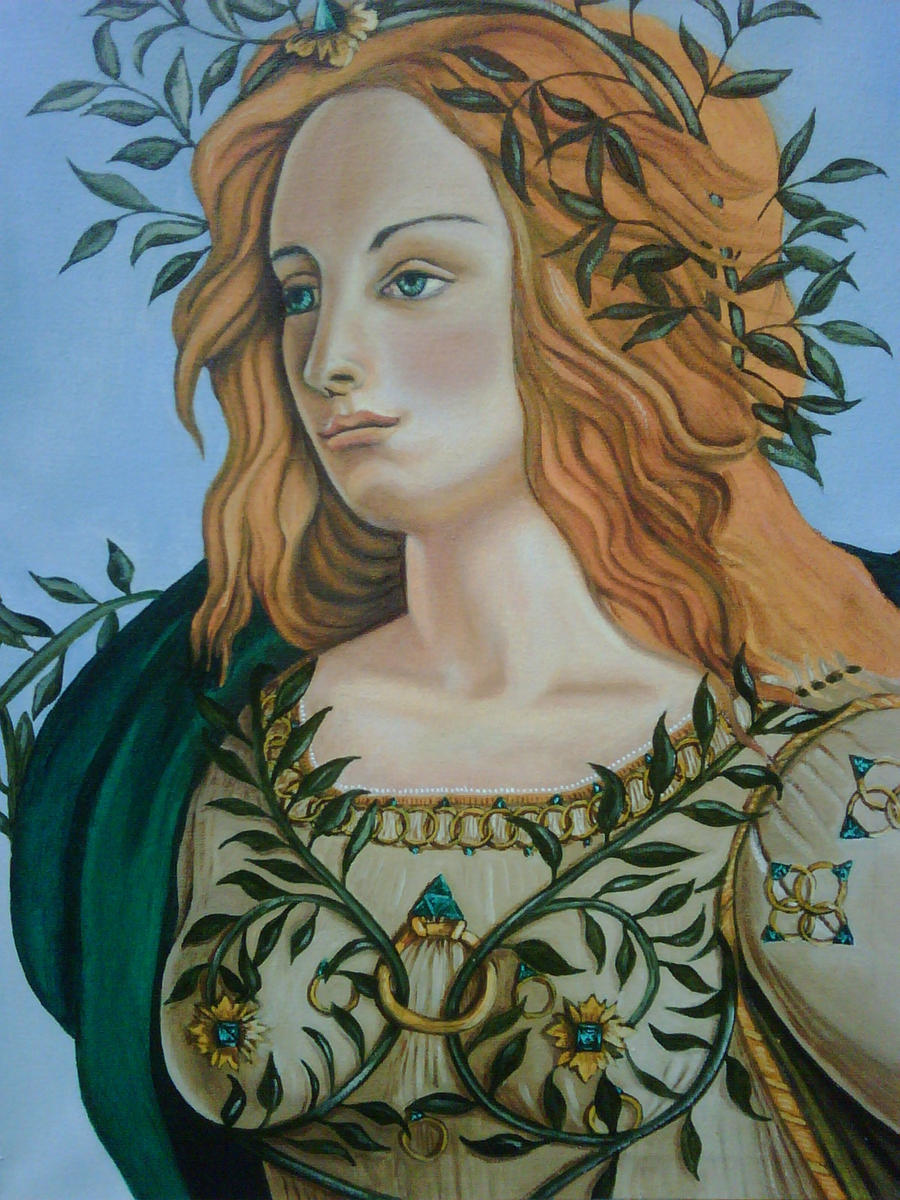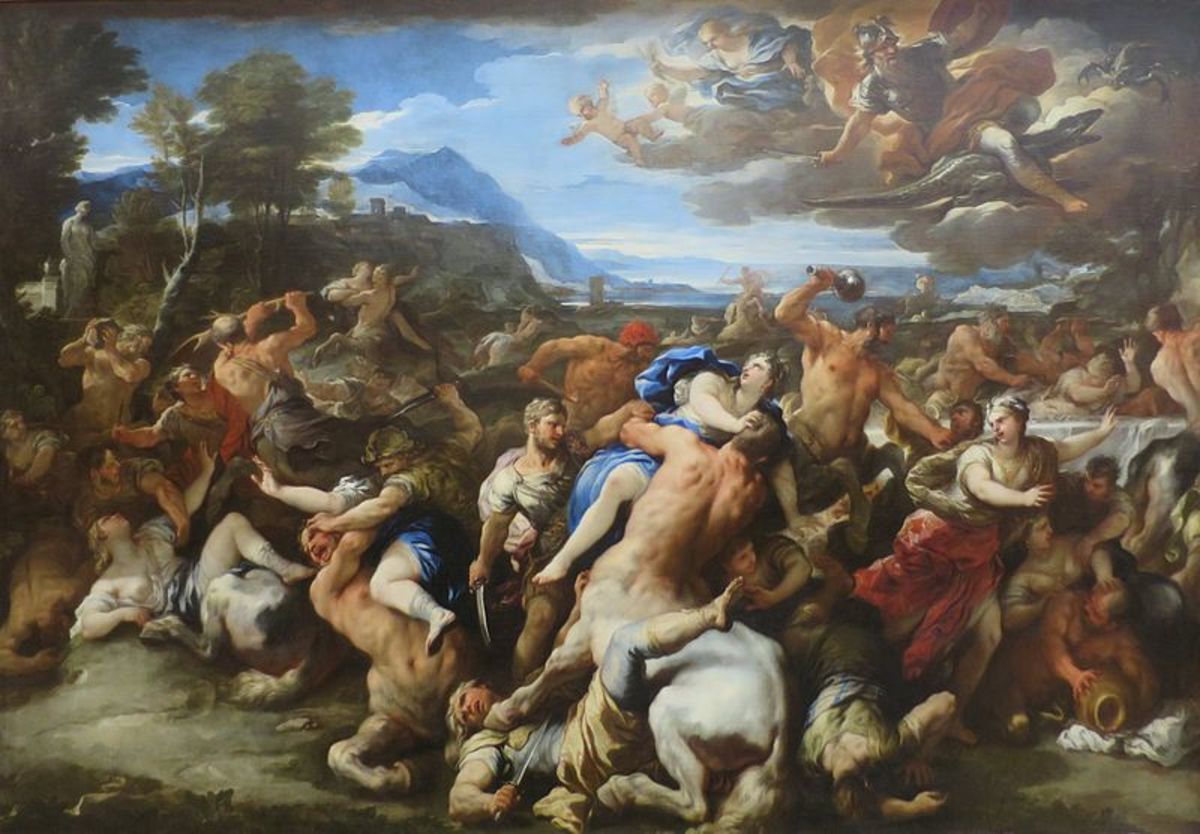Pallas and the Centaur Sandro Botticelli Aesthetic Inspiration Rain

Pallas and the Centaur Sandro Botticelli Aesthetic Inspiration Rain
Pallas and the Centaur was depicted by Sandro Botticelli in 1482 and now hangs in the Uffizi in Florence, Italy. The majority of Botticelli paintings are oil on panel, but this breaks from the mould in that it was on a large canvas - sized at 205cm x 148cm.. Today's artists predominantly use oil on canvas, but at that time Tempera was the tool of choice.

Pallas and the Centaur Transcription Piece YouTube
Pallas and the Centaur is a painting by the Italian Renaissance painter Sandro Botticelli, c. 1482. It is now in the Uffizi Gallery in Florence. It has been proposed as a companion piece to his Primavera, though it is a different shape. The medium used is tempera paints on canvas and its size is 207 x 148 cm.

Pallas and the Centaur by Linda Proud
Centaurs in Art: Duality Throughout the Ages. Sandro Botticelli, Pallas and the Centaur, 1480-85, Uffizi Gallery, Florence, Italy. Detail. Centaurs are human-horse hybrid creatures composed of dualities: human and nature, chaos and neutrality, love and violence. From ancient Greece to present day, centaurs have inspired and intrigued artists.

Botticelli Pallas and the Centaur particular Your Contact in Florence
The centaur, a mythical creature, combining man and beast, symbolises the feral instincts of humanity and therefore, the work is to be understood as an allegory to virtues that act as a brake on a bad-tempered, passionate temperament. A young woman wears a dress with repeat decoration of the three-ring insignia of the Medici family.

Detail from Pallas and the Centaur. Lithograph. After Sandro Etsy
Pallas and the Centaur, 1485 by Sandro Botticelli Click Image to view detail. Pallas and the Centaur is hung together with Primavera in the city palace of Lorenzo di Pierfrancesco. It shows Pallas Athene, Goddess of Wisdom, standing next to a centaur.

Pin by Zizo Lion on Random Collection Centaur, Mythological creatures
Pallas and the Centaur is a painting by the Italian Renaissance painter Sandro Botticelli, c. 1482. It is now in the Uffizi Gallery in Florence. It has been proposed as a companion piece to his Primavera, though it is a different shape. The medium used is tempera paints on canvas and its size is 207 x 148 cm.

Joshua Peeters' Parade Pallas en de centaur
Pallas and the Centaur is a painting by the Italian Renaissance painter Sandro Botticelli, c. 1482. It is now in the Uffizi Gallery in Florence. It has been proposed as a companion piece to his Primavera, though it is a different shape. [1] The medium used is tempera paints on canvas and its size is 207 x 148 cm.

Pallas with Centaur » Norton Simon Museum
Pallas and the Centaur. Home. >. The Artworks. Author: Sandro Botticelli - Alessandro Filipepi Painted in: Florence 1445-1510 Framework: Tempera on canvas, 207x148 Located in: Botticelli Room. Also painted for Giovanni and Lorenzo di Pierfrancesco de' Medici in the early 1480s. At the Uffizi since 1922.

Antik Yunan’ın Fantastik Canavarları Düşünbil Portal
Pallas and the Centaur is the title of a painting created by Italian artist Sandro Botticelli. Botticelli, who lived from 1445 to 1510, was an important artist in the Italian Renaissance, a.

Sandro Botticelli, Pallas and the Centaur. Tempera on canvas. 81 1/2 x
Paintings, sculptures, and prints from Mia's collection will be shown alongside masterworks from the Uffizi, including rare paintings and drawings by Botticelli, such as his masterful Pallas and the Centaur (c. 1482); works by his teacher (Fra Filippo Lippi) and colleagues (Domenico Ghirlandaio, Cosimo Rosselli, Perugino); and ancient Greek and.

Botticelli Pallas and the Centaur DaniellakruwPierce
"Pallas and the Centaur" by Sandro Botticelli depicts a centaur with a bow and arrows and a female figure holding a very elaborate halberd. She is clutching the centaur's hair, and he is submissive to her. The female character was called Camilla in the earliest record of the painting, but later she is called Minerva.

Pallas and the Centaur by riodream on DeviantArt
Pallas and the Centaur painting by Botticelli Learn about this topic in these articles: discussed in biography In Sandro Botticelli: Mythological paintings 1477-82), Pallas and the Centaur (c. 1485), Venus and Mars (c. 1485), and The Birth of Venus (c. 1485).

Pallas and the Centaur Painting in the Uffizi Gallery in Florence on
Pallas and the Centaur belongs to the same time period as Botticelli's famed Primavera and Birth of Venus, commissioned by the Medici in the 1480s. The painting draws inspiration from Antiquity, but there are still discussions about the true identity of the mysterious female figure.

Pallas and the Centaur (detail) by BOTTICELLI, Sandro
Botticelli Pallas and the Centaur actually represents Lorenzo as Pallas/peace, holding the instinct of the Centaur/war. The cloth of the Goddess is decorated with a motif that was the personal symbol of Lorenzo (rings with diamond) and enriched by olive tree branches (the olive tree is a symbol of peace).

"Botticelli Pallas And The Centaur (Around 1482)" iPhone Case & Cover
These pictures - Pallas and the Centaur (c.1482, Uffizi Gallery, Florence), Venus and Mars (1483, National Gallery, London), Birth of Venus (1482-3, Uffizi), La Primavera (1484-6, Uffizi) - mostly completed in the 1480s, form an unusually homogenous group, in both their narrative content and stylistic expression. In spite of numerous scholarly.

Centaurs in Greek Mythology hubpages
Pallas and the Centaur c. 1482 Tempera on canvas, 207 x 148 cm Galleria degli Uffizi, Florence: According to the inventory of 1499 which lists the property of Lorenzo di Pierfrancesco de' Medici, cousin of Lorenzo the Magnificent,the painting Pallas and the Centaur hung above a door in the same room as the Primavera. Its bare landscape focuses.